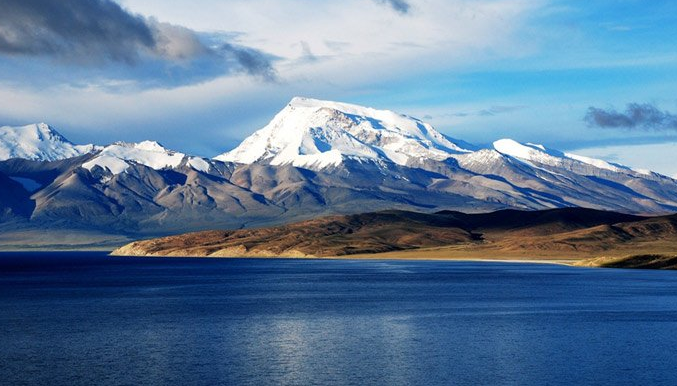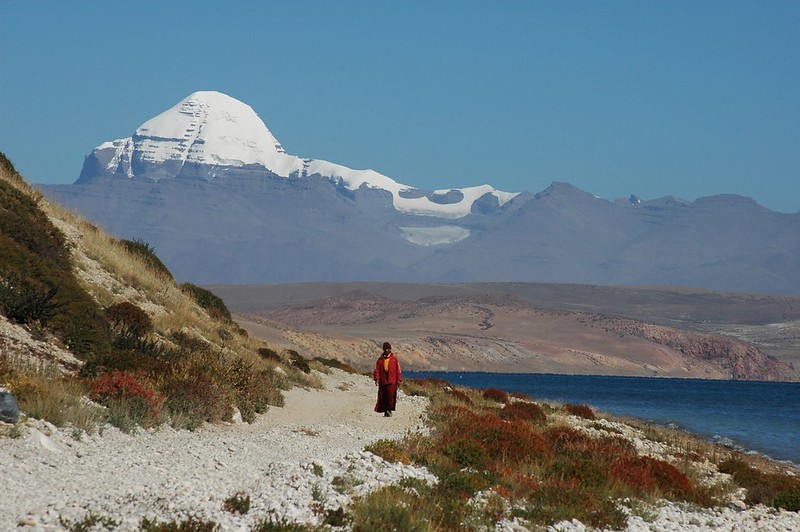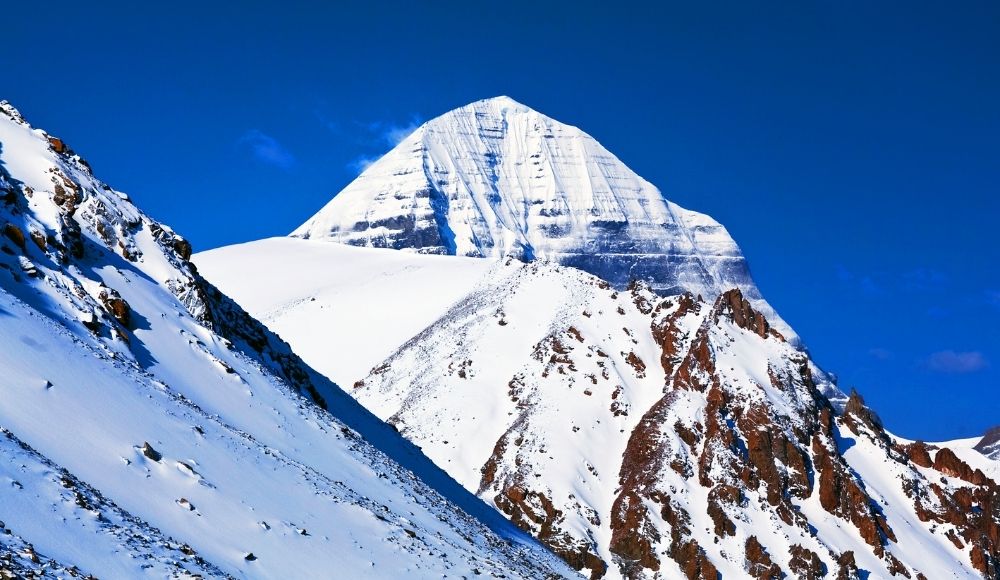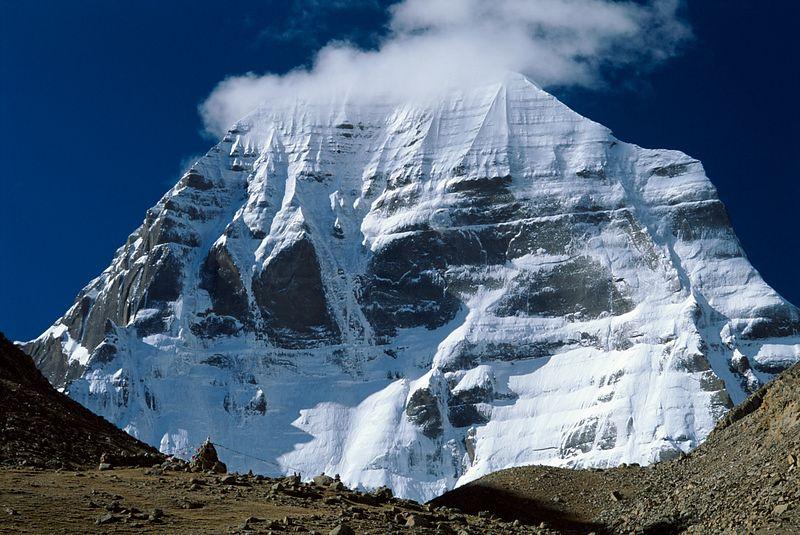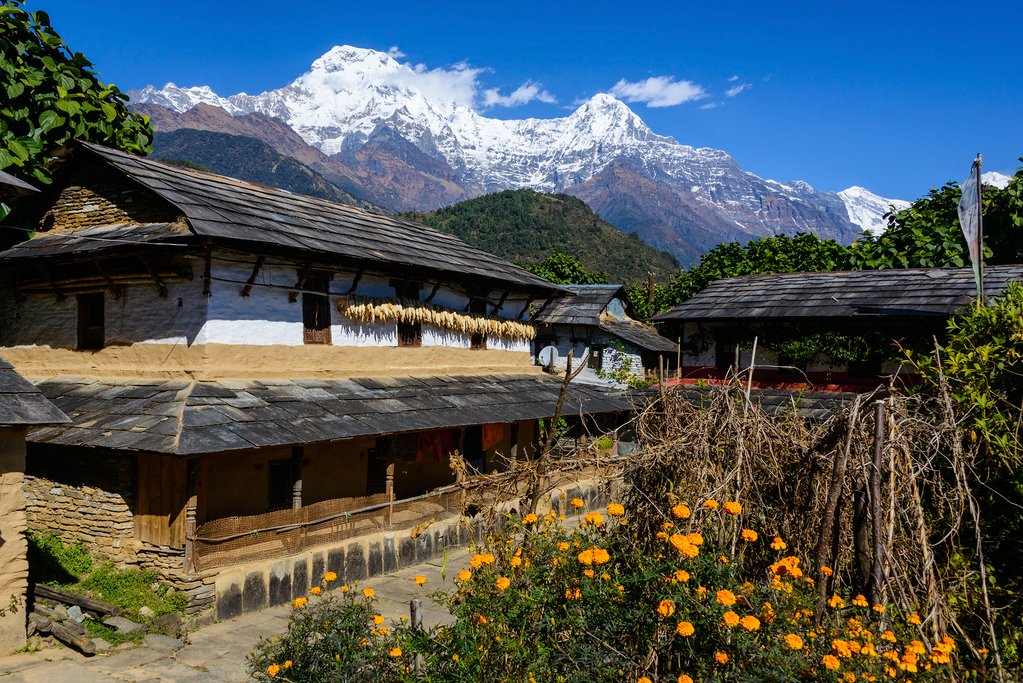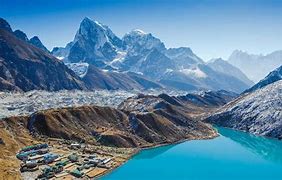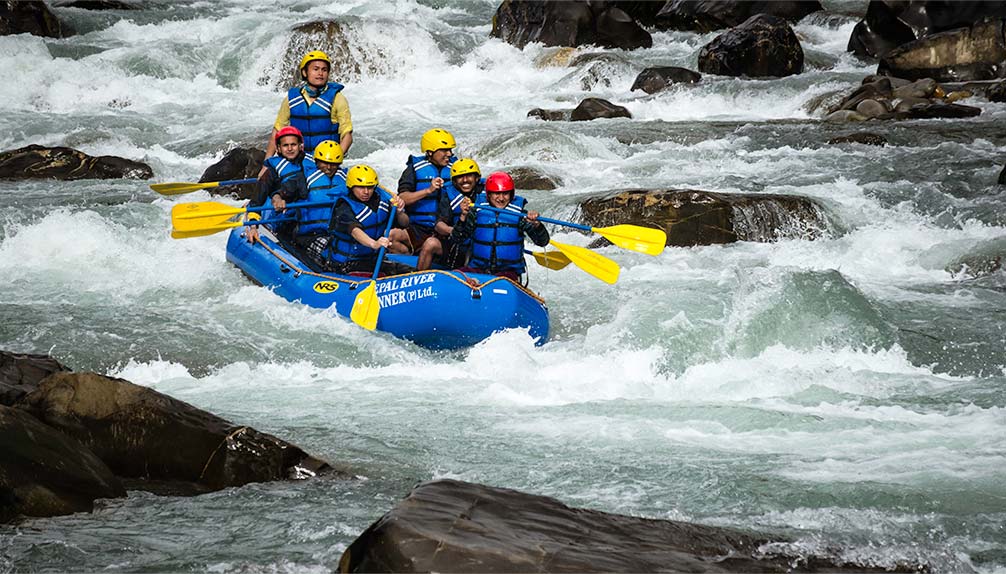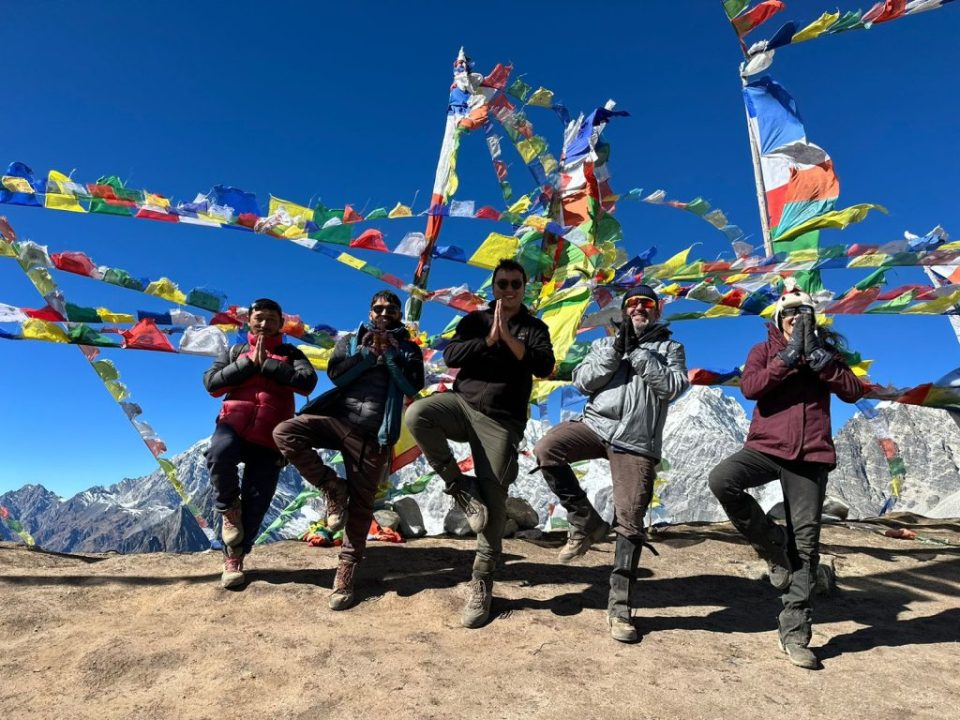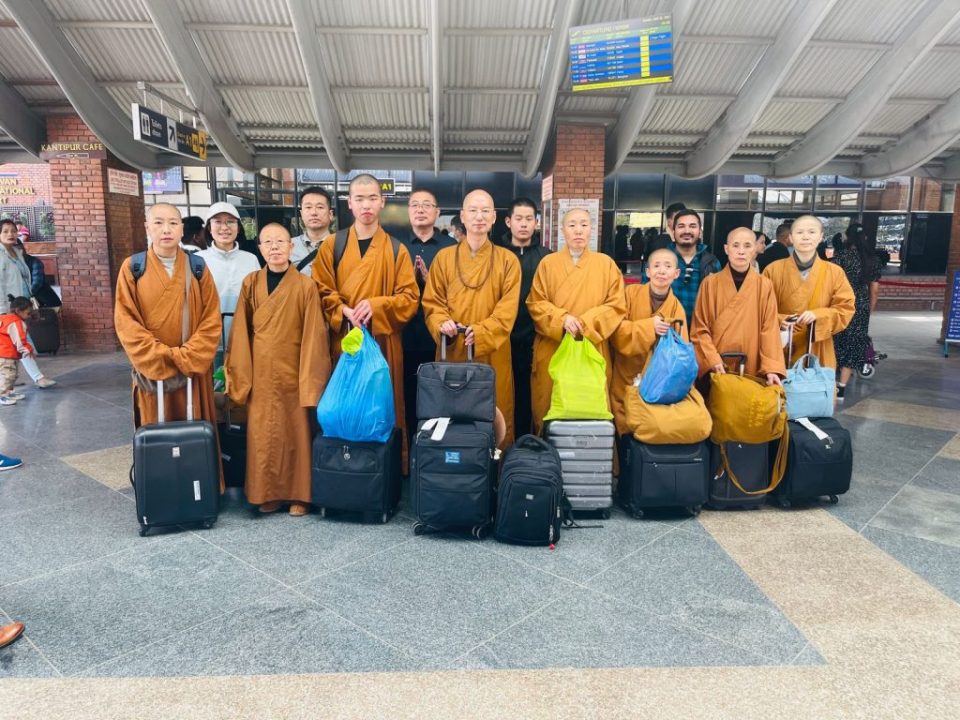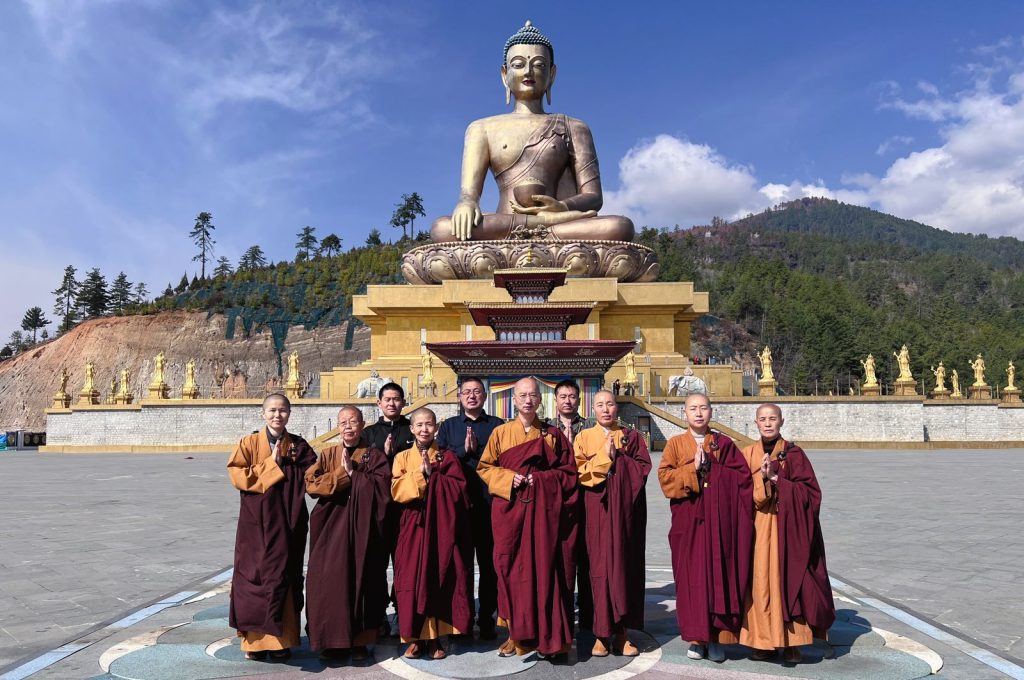Mt. Kailash and Manasarovar Lake Trek- 16 Days
Fitness Level
ModerateTrip Introduction
In Tibetan, Mount Kailash is known as Kang Rinpoche or the Precious Jewel of Snow. It is the Kailash range’s highest summit. It is located at a height of 6,638 meters (21,778 feet). It is located in western Tibet and is a part of the Trans-Himalaya. It has a profound spiritual importance for Hindus, Buddhists, Jains, and Bons. It is believed by Hindus to be Lord Shiva’s home. Tibetan Buddhists believe that Kailash is where the Buddha Demchok, who represents Supreme Harmony, lives.
Kailash, also known as “Mount Ashtapada ” in Jainism, is the point where Rishabhadera- the faith’s founder, obtained independence from the cycle of life and rebirth. The single kora of mount Kailash takes three days to complete whereas, it is believed that the 108 Kora (Parikrama) break the cycle of rebirth and assure one of nirvana at death. Hindu and Buddhist made the Kailash circuit in a clockwise direction but the Jain and Bon religions made it in an anticlockwise.
According to Hindu belief, the lake was first created in Lord Brahma’s thoughts. As a result, it is known as Manasarovar in Sanskrit, which is a combination of the words “Manas” Mind and “Sarovar Lake.”Manasarovar, with a height of 4,576m/15,015ft, is only a few kilometers away from Mount Kailash. It is believed that the ceremonial bath/dip in the lake, cleanse the sins of this life as well as all previous lifetimes.
A seven- to eight-hour journey from Kathmandu to Syabrubesi begins off the 16-day trip. From there, there will be a one-hour trip to Kyirong, where we shall thoroughly acclimate. We’ll continue on to the vast dry and barren country that leads to the Sacred Mansarovar at the foot of Mount Kailash, where we’ll visit and have a pilgrimage walk (kora of Mt. Kailash) before crossing the Dorma La High Pass at an elevation of 5,470m/17,946ft. We will descend to Barkha valley and return to Kathmandu after admiring Mount Kalisha and Mansarovar.
Trip Facts
| Country | Tibet |
| Duration | 16 Days |
| Maximum Altitude | 5,470m/17,946ft |
| Meals | Breakfast, Lunch, Dinner |
| Accommodation | Hotel, Lodge, Teahouses |
| Grade | Moderate |
| Best season | Mar, Apr, May, Sep, Oct, Nov |
Trip Highlights
- Enjoy the scenic Drive to Kyirong.
- Explore the sacred Lake Mansarovar.
- Admire the Holy Mountain Kailash.
- Cross the Dorma La High Pass
- Experience the lifestyle of the Mountain People.
Is this trek appropriate for you?
- The Kailash and Manasarovar Trek is the Moderate Trek. You can easily complete this trek if you are physically and mentally prepared and willing to do so.
- You will be Trekking for 3 Days. The Path can be completed in as little as 4 hours as much as 8 hours.
- The walk is not tricky, there is no Climbing or Scrambling but the path is rocky and hilly.
- Each day you will cover 200 to 400 meters in height while trekking. The highest point in the trek you will reach on the trek is 5,470m.
- The weather and Remoteness of this trek, as well as dealing with the high altitude, require a slow pace and the need to stay hydrated.
Itinerary
| Day | Activities | Durations |
| 1. | Arrival at TIA Kathmandu (1,400m/4,592ft) | |
| 2. | Drive from Kathmandu to Syabrubesi (1,500m/4,921ft) | 7-8hrs |
| 3. | Drive from Syabrubesi to Kyirong (2,890m/9,481ft) | 1-2hrs |
| 4. | Acclimatization Day at Kyirong | |
| 5. | Drive from Kyirong to Saga (4,400m/14,435ft) | 5-6hrs |
| 6. | Drive from Saga to Paryang (4,550m/14,927ft) | 5-6hrs |
| 7. | Drive from Paryang to East Mansarovar (4,550m/14,927ft) | 6-7hrs |
| 8. | Acclimatization Day at Mansarovar. | |
| 9. | Drive from Mansarovar to Tarboche via Darchen (4,600m/15,091ft) and Walk to Dhiraphuk (4,900m/16,076ft) | 4-5hrs |
| 10. | Trek from Dhiraphuk to Zutul-Phuk (4,760m/15,616ft) via Dorma La (5,470m/17,946ft) | 6-7hrs |
| 11. | Trek from Zutul-Phuk to Darchen (4,602m/15,098ft) and drive near Maium La | 3-4hrs |
| 12. | Drive from Maium La to Saga (4,400m/14,435ft) | 6-7hrs |
| 13. | Drive from Saga to Kyirong (2,890m/9,481ft) | 5-6hrs |
| 14. | Drive from Kyirong to Kathmandu (1,400m/4,592ft) | 9-10hrs |
| 15. | Rest Day at Kathmandu | |
| 16. | Departure |
Itinerary
Departure from : Kathmandu, Nepal
Arrival On : Kathmandu, Nepal
Day 1
Arrival at TIA Kathmandu
Upon arrival at Tribhuvan International Airport (TIA). Our agent will greet you and accompany you to the hotel. Drive to the hotel and check-in. Our guide will come to see you in the evening and give you a brief overview of the journey. At the hotel, we had dinner and stayed the night.
Day 2
Drive from Kathmandu to Syabrubesi
This morning, after you’ve finished your breakfast at the hotel. We will depart for Syabrubesi, a 7 to 8-hour drive away. We’ll be driving through traditional terraced fields and along the mountainside. We will pass through Trishuli, a busy settlement. The path takes you through Naubise – Galchi – Dunche and finally Syabrubesi.
Dinner and Overnight at the Lodge
Day 3
Drive from Syabrubesi to Kyirong
After breakfast at the hotel this morning. We’ll leave towards Kyirong, which is about an hour distant. It is a recently constructed route that connects Nepal and Tibet and leads to Rasuwagadhi. We’ll be driving along the mountainside and across traditional terraced fields. We’ll finish both sides’ immigration and customs processes before heading to Kyirong.
Dinner and Overnight at the Lodge.
Day 4
Acclimatization Day at Kyirong
Today is a very crucial day because we are traveling to a higher altitude and need to rest. We are acclimating at an altitude of 2,890 meters because we will be traveling to a higher height of 4,500 meters tomorrow, so appropriate rest is essential. We’ll go on a hike around Kyirong and take in the views of Ganesh Himal and Langtang Himal.
Dinner and Overnight at the Lodge.
Day 5
Drive from Kyirong to Saga
After a relaxing day at the Kyirong, we’ll eat a hearty breakfast before departing for Saga. The journey will take approximately 5 to 6 hours. We’ll be traveling through Tibet’s tallest and largest plateau. We’ll also travel through Tibet’s rugged, windswept, mountainous, and dry landscapes before joining a road that runs from Nylam to Paikutsho’s massive salt lakes. We’ll stop for lunch on the way. We will continue to the Bhramputra River or Yalung Tsangpo, where we will cross the river on a bridge and arrive in Saga town.
Dinner and Overnight at the Lodge.
Day 6
Drive from Saga to Paryang
We will depart for Paryang after enjoying breakfast at the Saga. The journey will take approximately 5 to 6 hours. It is the entrance to Mount Kailash. With breathtaking scenery, unusual Plateau landscapes, and views of the Himalayas, the drive will be fascinating. We’ll stop for lunch on the way. We’ll pass through various villages and yak ranchers before arriving in Paryang.
Dinner and Overnight at the Lodge.
Day 7
Drive from Paryang to East Mansarovar
We will depart for East Mansarovar after breakfast. The journey will take approximately 6 to 7 hours. We’ll pass through small villages and a wanderer camp on our way there. From there, we’ll ascend to 5,150 meters and cross the Mayam-La pass. Lunch will be served on the way. From there, we’ll go to East Lake Mansarovar, where we’ll see Mount Kailash for the first time.
Dinner and Overnight at the Lodge.
Day 8
Acclimatization Day at Mansarovar
Today is an essential day because we are ascending to a higher altitude and will need to rest. We will wander around the Sacred Lake Mansarovar. The Lake is said to have been created in the mind of Lord Brahma. “Manas” means mind in Sanskrit, and “Sarovar Means Lake. It is said to be the symbol of purification, with healing properties and the ability to wash away all mortal sins. We will acclimate properly for the rest of the day.
Dinner and Overnight at the Lodge.
Day 9
Drive from Mansarovar to Tarboche via Darchen and Walk to Dhiraphuk
After breakfast, proceed to Tarboche via Darchen. The drive takes between 4 to 5 hours. We’ll be passing through the foothills of Mount Kalisha, Darchen. We will pass through the West Kailash Mountain View. We’ll stop for lunch on the way. We will proceed to Tarboche, the trek’s starting point. We’ll walk to today’s destination, Dhiraphuk. We’ll be walking for 4 to 5 hours. After reaching the Dhiraphuk get refreshed and rest.
Dinner and Overnight at the Lodge.
Day 10
Trek from Dhiraphuk to Zutul-Phuk via Dorma La
After breakfast, proceed to Zutul-Phuk via Dorma La. We’ll be walking for 6 to 7 hours. We’ll walk for an hour on the sloping path and then climb to the highest point of the trek, Dorma La. It is the Pilgrimage’s physical and spiritual high point. We’ll stop for lunch on the way. Descend further toward the Zutul-phuk Gompa. Zuthul translates as “Cave.”
Dinner and Overnight at the Lodge.
Day 11
Trek from Zutul-Phuk to Darchen and drive near Maium La
We’ll leave for Darchen after breakfast. The last day of the Kora Parikrama is today. We will begin with a short three-hour hike across the broad plain, passing by many Mani walls. As you approach a narrow valley with a short section on the George as a route turn towards Darchen. From there, we’ll make our way to the plain’s river valley, passing through Mani walls decorated with carved yak skulls. We’ll stop for lunch on the way, and this will be the end of our wonderful journey. We’ll then take a drive around Lake Manasarovar to Maium La.
Dinner and Overnight at the Lodge.
Day 12
Drive from Maium La to Saga
We’ll leave for Saga after finishing our breakfast. We’ll be driving for 6 to 7 hours. We’ll take the same route through Paryang. The drive will be fascinating, with breathtaking scenery, unusual Plateau landscapes, and views of the Himalayas. On the way, we’ll stop for lunch. We’ll pass through villages and yak ranchers along the way. We’ll continue on our way to the saga.
Dinner and Overnight at the Lodge.
Day 13
Drive from Saga to Kyirong
We’ll leave for Kyirong after breakfast. The journey will take between 6 and 5 hours. We’ll be taking the same road trip. We’ll keep going until we reach the Bhramputra or Yalung Tsangpo rivers. We’ll also travel through Tibet’s rugged, windswept, mountainous, and dry landscapes before joining a road that connects Nylam to the massive salt lakes of Paikutsho. On the way, we’ll stop for lunch. We’ll be traversing Tibet’s highest and largest plateau. Continue driving toward Kyirong.
Dinner and Overnight at the Lodge.
Day 14
Drive from Kyirong to Kathmandu
After Breakfast departs for Kathmandu. The drive will take between 9 and 10 hours. We will leave Tibet after a short drive to the Nepal-China border post, where we will complete the Immigration Formalities. We’ll keep driving on a dirt road until we reach Syabrubesi. Further, we’ll be driving along the mountainside and through traditional terraced fields. We’ll pass through Trishuli, a busy town. On the way, we’ll stop for lunch. The route passes through Dunche- Galchi- Naubise, and finally Kathmandu.
Dinner and Overnight at the Hotel.
Day 15
Rest Day at Kathmandu
This is your final day in Kathmandu. Enjoy your breakfast at Bouddhanath. Then go for a walk in Kathmandu’s valley. You can go shopping or visit Durbar Square, and then have a farewell dinner with your guide later that evening. Staying in the hotel for the night.
Day 16
Departure
The 15-day journey has concluded. Today is your last day in Kathmandu. Our representative will have a short discussion on the trip and take your feedback after a hearty breakfast. Following this session, he will drive you to the airport in our private transportation 3 hours before your trip.
Route Map
Altitude Map
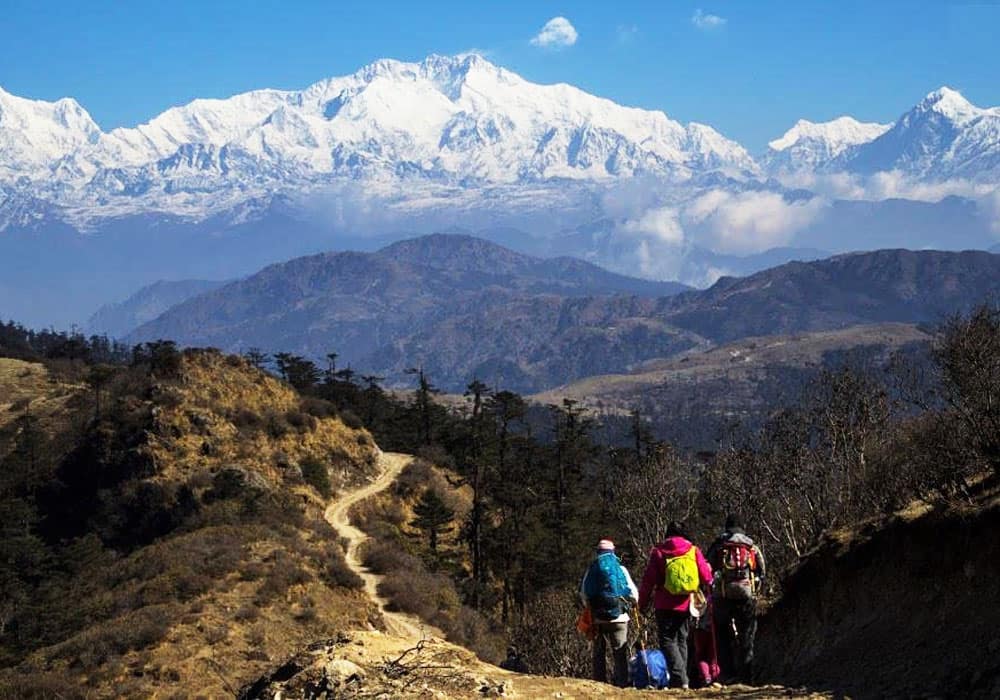
What's Included
- Arrival and Departure: Airport picks up and drops off, transfers and sightseeing on a private basis.
- Accommodation in star category hotel and basic lodge in Nepal.
- Accommodation in star category hotel in Tibet and accessible accommodation sharing in tented camp or guesthouses during our trek.
- Food: 3 meals a day (Breakfast, Lunch, Dinner)
- Permits: All necessary paper works: Tibet Travel Permit, Alien Travel Permit, Foreign Affair Permit, Military Area Permit.
- All government and local taxes if necessary.
- Road Transportation- Drive from Kathmandu to Kyirung to Man Sarovar and back.
- Drinking water: 2 liters of boiled water per day per member.
- Guide: Tibetan Guide or Government licensed Guide (English and Local language speaking).
- Comprehensive medical kit.
- Sim card to per member.
What's Not Included
- China entry visa fee.
- Extra night expenses at Tibet other than the scheduled itinerary.
- Personal Travel insurance.
- Personal Expenses: Telephone calls, Internet cost, VPN, Toiletries, laundry, soft drinks, and any alcoholic beverage.
- Rescue Evacuation.
Equipment List
What to bring ?
General
Tailor Your Holiday
Everyone has their own preferences in terms of destination, journey time, and budget. As a result, sticking to our plan isn't necessary. We will create a personalized itinerary for you that includes accommodations, transportation, meals, and tour guides. We guarantee you the best Tailor-made Package because this is your trip. You have the option to personalize it, as your liking. Let us Plan together to make your Vacation worth it.
Fixed Departure
Why Travel With Us?
The Ideal Time to Travel
The perfect time to visit Tibet is from April to October each year when the weather is pleasant and the scenery is breathtaking. The average temperature is higher than 10°C, and the oxygen content is higher than in other seasons. It is also popular for the tourist season in Tibet. Because of the high altitude in Tibet, the temperature is usually lower than in any other city in China during the same season; it’s a little harsh with thin air, strong ultraviolet rays, and distinct rainy and dry seasons.
Spring: The spring season begins in March and lasts through May The weather is starting to warm up, but the temperature remains cold as the ice melts, demanding the use of a long coat, a warm sweater, and a jacket. Tibetan spring, however, is still chilly, snowy, and icy due to the high altitude. The humid and warm airflow cannot reach the core area due to the blockade of the huge Himalayas Ranges.
Summer: From June until August, the summer season begins. It’s a peak tourism season in Tibet. Many festivities, such as the Ganden Thangka Festival, Shoton Festival, and Nagqu Horse Racing Festival, are held in Tibet during these three months, and you may still enjoy the cleanest view of the Mountains. T-shirts, long-sleeved coats, sunglasses, and sun protection are all required.
Autumn: Autumn begins in September and ends in October. During these two months, the weather is most pleasant, with plenty of sunshine during the day, and the scenery is particularly lovely. It would be fine to wear garments that are similar to those worn in the spring.
Winter: Winter begins in November and lasts until February. Because of the weather, fewer individuals prefer to travel to Tibet in winter, but it is less crowded and tour prices are lower than other months. You may still participate in the Tibetan New Year (between January and February) and the streets will be colorfully painted for this. Warm sweaters and down coats are required, and comfortable athletic shoes are strongly advised in all weather conditions.
Altitude Sickness
Anyone planning a trip to Tibet (Mt. Kailash) should be aware of what altitude sickness is, what causes it, and how to cope with the symptoms of this possibly deadly illness. Altitude sickness is the most serious medical danger when visiting Tibet; an altitude of more than 3000 meters is considered high altitude. Tibet is a mountainous region with an average height of around 4000 meters. Most places where people can go and hike are higher than 3000 meters, therefore travelers should be aware of how to avoid altitude sickness. Mt. Kailash and Manasaravoar, Tibet should not be visited by someone with a serious heart condition. Before traveling, those with high or low blood pressure should visit a doctor.
Symptoms
- Increased breathing.
- Increased urination.
- Restless sleep.
- Periodic breathing at night because of altitude.
- Dehydration.
- Shortness of Breath.
- Extreme fatigue.
- Respiratory failure.
- Cerebral edema.
- Coma.
There are, however several other precautions you may take to reduce your risk of getting hit by altitude sickness while traveling to Mt. Kailash and Mana Sarovar lake.
- As the air gets increasingly thin, an increase in elevation reduces oxygen levels, and in Tibet. Avoid the consumption of alcoholic beverages, cigarettes, and tobacco that decreases the body’s water content.
- The greatest remedy is to always stay hydrated. Instead of drinking cooled water, drink warm water.
- As possible don’t take the ceremonial bath in the cold Mana Sarovar lake, but if you take the ceremonial bath in the take make sure you cover your head warmly after the bath, else you might face health issues.
- Avoid sleeping pills to treat insomnia because they suppress breathing.
- Diamox is the most effective altitude sickness medication; however, you should consult with your physician to see whether it is advantageous.
- You should prepare yourself physically and mentally before traveling to Tibet.
Things to know before traveling to Tibet- Mt. Kailash and Man Sarovar Lake.
Drinking-Water
Tibet has some of the world’s most abundant water resources. Tibet’s lakes, rivers, numerous fresh springs, and dozens of Himalayan glaciers serve as the main water sources for the entire South Asian region. Tibet’s high-altitude plateau is also the home to six of Asia’s longest rivers.
Despite having abundant water resources and serving as the primary source of water for billions of people in South Asia, Tibet’s drinking water remains a big issue. Lakes and rivers contain toxic water that should not be consumed directly. Because tap water is not treated, it can make you feel sick.
As a result, Tibetans drink boiled water or bottled mineral water. We recommend consuming boiled or bottled water even to brush your teeth and wash the fruits as well. Many mineral water companies in Tibet purify and filter natural glaciers using a unique technology that makes the water consumable without the need to boil it. Bottled Mineral water can be purchased at a low cost. It costs 3-4 yuan (60 cents) for 500ml of bottled water and 7-8 yuan (2$) for 1.5 liters.
Not to drink the water that has not been boiled or purified. Purifying tablets is not advised because Boiling kills bacteria more effectively than purifying tablets. Ultraviolet light /SteriPen is also a highly recommended means of purifying water, an expensive but one-time investment.
Generally, most of the hotels, lodges, guesthouses in Tibet have constantly heated pots of water for drinking and other purposes. You can get boiled water free of cost anywhere you stay so, bring a Reusable water bottle favorable for both hot and cold water. For Bottled water, our representative will provide you 2ltr of bottled mineral water per day throughout the entire trip.
Network service and Internet Facility
As network connectivity is required in any trip/vacation to any location to stay in touch with your loved ones. Here is some information regarding China’s network that you should be aware of and check before traveling to China.
About your phone
China has three major cellular service providers: China Telecom, China Mobile, China Unicom. To use these China’s networks during your trip, your phone must be compatible with these networks. It’s possible that your phone will not work or support the Chinese network. So that, first you have to ensure that your phone work in China. To do so, you have to go to willmy.phonework.net and check whether or not your phone will work in China. There you will get information about whether or not your phone operates in China, as well as mobile frequencies and network compatibility. Contact the phone service provider if you are facing any difficulty regarding your phone frequency before traveling to China.
If your phone is compatible with the China network’s frequency. You can either request your phone’s service provider to activate the mobile roaming service Or you can buy a local China network sim card that works with your phone. Most of China’s network has a roaming agreement with the international network. So, once the roaming service is activated, simply turn on the roaming setting on your phone to connect to the local network. After that, you can use your sim card for international calls, texts, and internet access. We recommend purchasing a local sim card because making international calls from Tibet with your regular sim card is extremely expensive and also you won’t be able to use services like Gmail, Facebook, YouTube, and others that you might use in your home country.
If your phone does not operate on the Chinese network, ask your agency to rent you a phone in China with a Chinese sim card to use during your visit.
About China’s Sim Card
Purchasing a local SIM card in China before traveling to Tibet (Mt. Kailash), is highly recommended because it is much cheaper and time-saving than paying a large international roaming service bill. You can purchase a Sim card in any China airport, train station, or mobile vendor store.
The major cellular service provider of China is China Telecom, China Mobile, China Unicom. These networks have a good signal range up to Tibet’s Mt. Kailash. If you are buying a local sim card, here is some guidance that can help you to use these local Chinese sim cards.
- Go to a mobile phone vendor and ask for a compatible sim card for your phone.
- Tell the staff about the SIM card size and buy the SIM Card.
-Show your passport with a valid Chinese visa.
-Payment can be done by cash, bank, or WeChat pay.
- Ask for the mobile package brochure and select a package from the list.
- Purchase the data plan and register your phone number.
- You can also ask them to top up your mobile by paying extra or you can simply do with WeChat pay.
For more information about the sim card go to ……. site.
Documents needed to buy a SIM card
- 1 passport size photo
- Passport with valid Chinese visa.
(Payment can be done by cash; bank card or WeChat pay.)
Note- Your phone must be unlocked to use China’s local Sim Card.
Internet facility in Tibet
Although Tibet has developed later than other countries, every village in Tibet currently has Broadband internet connectivity with 4G coverage. You can use all 3G, 4G, and 5G network coverage throughout Tibet. Wi-Fi is available in almost every hotel, lodge, and guesthouse in Tibet. However, beyond Mana Sarovar, Mt. Kailash Kora there is no internet due to the high altitude.
You can also hire a Pocket Wi-Fi to enjoy a steady internet connection. Pocket Wi-Fi, also known as a mobile hotspot/ MI-FI in China, is a portable wireless hotspot. It is cost-effective, as it includes 3G and 4G network access as well as limitless data usage. With this Pocket WI-FI, you get full internet access with unlimited data consumption everywhere in China.
Despite having access to the internet, you will not be able to use Google, Gmail, Facebook, Instagram, or Twitter in China without VPN. To do so, you must purchase a VPN package from the best VPN seller in China. Don’t purchase a VPN without checking whether it works or not in China.
Link-
Things to bring on your trip to Mana Sarovar lake and Mt. Kailash trek.
Travel documents
- Travel insurance policy documents.
- Valid passport with Group Tourist Visa of China.
- Copies of passport.
- Passport- size photos.
- Yuan currency or US currency.
- Travel permits- Tibet Travel Permit, Alien Travel Permit, Foreign Affair Permit, Military Area Permit.
Clothing
Tibet’s climate is one of a kind in the world. Although Tibet is known as the Land of Snow, the climate in Tibet is normally dry. Tibet, like other countries, has four seasons in a year as well as monsoon. However, we are traveling to Mt. Kailash and Mana Sarovar which is the low-temperature region of Tibet. So, you then have to prepare your clothes considering the destination, to which you are traveling.
Winter (Dec-Jan-Feb)
During the winter, Tibet Mt Kailash and Mana Sarovar are completely covered in snow you need to bring warm clothes. In this season, the average temperature in the area will be between Max. -2° C and Min-20° C. For the wonderful winter trip to Mt Kailash and Mana Sarovar, you had to bring a thick sweater, jackets, warm shoes, a woolen cap, and sunglasses.
Spring (Mar-Apr-Feb)
It is the warmest season in Tibet. The average temperature of this season will be between Max. 5° C and Min-15° C. The best pick of clothing for this season includes sportswear, a thin sweater, and a jacket.
Summer (Jun-Jul-Aug)
It is Tibet’s hottest season. The sun’s heat is particularly hot this season. The average temperature of this season will be between Max. 15° C and Min 3° C. Long-sleeved shirts and pants and hats or caps are strongly suggested to prevent sunburn. Monsoon rain can have an impact on the weather throughout this season.
Autumn (Sep-Oct-Nov)
This season’s weather is warm or chilly. It’s a fresh time. The average temperature of this season will be between Max. 13° C and Min-10° C. Comfy sportswear and the thin sweater are the best picks of clothing for this season.
Note- Although the day may be pleasant, the evenings in every season are normally cold in Tibet. During the night you must wear warm clothes. You must pack warmer clothes if you are traveling at a high altitude in any season.
Toiletries
- Wet Wipes and Tissue.
- Towels.
- Toothbrush and toothpaste,
- Hand sanitizer.
- Sunscreen, lip balm, body lotions.
- Deodorants.
- Shampoo and soap.
Personal items and First Aid kit
- Reusable water bottle.
- Plug adapter, Charging appliance, Power bank, Batteries.
- Pocket knife.
- Travel wallet.
Accommodation and Meal
Accommodation
During our stay in Nepal, we will be staying in a star category hotel in Kathmandu and a basic hotel/lodge in Sybrubesi.
In Tibet (Kyirong, Saga, Paryang) we will stay in a standard hotel.
Beyond Mana Sarovar (Mana Sarovar, Darchen, Dhirapukh, Zuthul- phuk) we will accommodate in a basic communal dormitory/ hotel.
Meal
As this is a Pilgrims tour, during the trip we will provide you with 3-time vegetarian meal without onion and garlic.
Breakfast– Pancakes, Toast with Jam/ Butter/ Honey, Roti/Puri Tarkari, Aloo Paratha, Cornflakes, Oatmeal, Porridge, Muesli, Upma, Milk/ Coffee/ Butter Tea/ Horlicks.
Lunch (packed during trek)– Dal Bhat (Rice, Roti, veg curry, lentils, Salad, Pickles, Papad), Fruits, Veg Biryani, Veg Spaghetti, Veg Macaroni, Roti, Samosa, Sandwich, Thukpa etc. with Juice or Lime juice with glucose.
Dinner– From the menu served by the hotels, guesthouses, and campsite. The menu varied with Indian, Chinese, Tibetan, European cuisine, Soups and desert.
Besides these, there are a variety of other options of food. You can buy it from your pocket. During the trek, you will get only vegetarian-based food. Vegan/ Kosher/ Gluten-free food is also available but has to inform before traveling.
Guide and staff Arrangements.
In a foreign land, language is the main concern everybody finds problematic. If a language barrier occurs, your trip can be spoiled. And Tibet is the place you cannot travel alone. You will require a local language-speaking guide who is also fluent in English. As well as you are traveling at a high altitude, we, therefore, give you a high experience and a certified local guide with good English proficiency and health assistance. They accompany you to keep your everyday schedule appropriately and systematically and will provide you treatment in case of any sickness during the journey All your activities are handled by our highly qualified and professional team. We have a skilled and trained team and guide. So, we hope for your respect and cooperation with them throughout the trip.
China Tourist Visa and Permits details
Visa fee and Procedure
Many kinds of visas exist in China. However, we are traveling to China to visit Mt. Kailash and Mana Sarovar Lake, a Chinese tourist visa(L-visa) or a Tourist Group Visa is required, valid for the entire duration of your stay in China. Either apply for an “L” Visa or Tourist Group Visa in your nearest Embassy of China.
Here is the fee structure of the “L” Visa of China.
| Number of Entry | American | Citizens of other countries* |
| Single Entry | $140 | $30 |
| Double Entry | $140 | $45 |
Note- The validity of L-Visa is 30 days and the validity of L-visa for single entry or double entry is 90 days and 180 days respectively.
Here are the necessary documents needed to apply for an L- visa.
- The “L” Visa/Tourist visa Application Form (Complete online, signed, and printed).
- An original passport with at least 6 months validity beyond the duration of the visa you’ve requested, as well as two blank pages (amendments and endorsement pages not included).
- Photocopy of your passport’s information page.
- At least 2 recent passport-sized photos of yourself. (Background color: black, white, or red).
- Itinerary of valid round trip vehicle confirmation.
- Proof of accommodation in China during your stay.
- Proof of your current residence. (Documents can be a copy of your Citizenship/ government ID or driver’s license, or a utility bill).
- Copy of your travel record.
- Invitation letter from a governmental agency or individual agency in China.
- Heath declaration form, as well as photocopy of both sides of your COVID-19 Vaccination Card.
- Minor travelers under the age of 18, should submit a copy of their birth certificate, copy of both parents’ passports or diver licenses, proof of current residency, a notarized letter of consent from both parents.
Fee structure for ‘Tourist Group Visa’ of China.
| Number of Entry | American | Citizens of other countries* |
| Single Entry | $110 | $24 |
Here are the necessary documents needed to apply for an L- visa.
- Visa notification Form any head office of the China Travel Services (CTS), China International Travel Services (CITS), or China Youth Travel Services (CYTS), or Chinese National tourist Bureau, or any Chinese Provincial Tourist Bureau.
- Completed Tourist Group Visa Application Form in Triplicate (If there is any blank left on the name list, draw a straight line from the left corner down to the right corner in blue or black ink).
- Original passports of all appearing members in the Tourist Group Visa Form, arranged in a consistent order with at least 6 months validity beyond the duration of the visa you’ve requested, as well as two blank pages (amendments and endorsement pages not included).
- Photocopy of all members’ passport information page.
Note- Though this Chinese Group Visa is cheaper than an “L” visa, we don’t recommend this Tourist Group Visa of China because all the members must arrive, stay together and depart together, as the visa is issued to the entire group. Change in the itinerary of one member will invalidate the visa of the entire group and a new visa need to issue for the rest of the group for departure. So, it is better to obtain a Tourist visa/ L visa.
For more information about visas, click this link www.visacentral.com
Entry permits and Requirements
Every visitor to Tibet except Tibetan and Chinese requires a Tibet Travel Permit (TTP), popularly known as Tibet Entry Permit or Tibet Visa. TTP is issued by the Tibet Tourism Bureau, so it must be obtained via. an authorized local Tibet agency in China.
Additionally, we will be traveling to Mt. Kailash and Mansavorar which is the most popular scared tourist destination in Tibet, you will require an additional permit: Alien’s Travel Permit popularly known as PSB permit issued by Public Security Bureau, Foreign Affair Permit issued by Foreign Affairs Office and Military Area Permit issued by Military Office in Lhasa.
Here is the cost of the permits for foreign travelers.
- Tibet Travel Permit
Tibet travel permit is one of the necessary permit documents you require along with a passport with a valid China visa before flying on the flight to Tibet or crossing the immigration point at Kyirong. You won’t be even able to book a flight to Tibet, without a Tibet visa.
| Permit Cost | 250-450CNY/ USD 40- 70$ (Per person) |
| Need permit who travel to | Tibet by flight, train or drive through the Kyirong border. |
| Working days | 15-20 days |
| Who needs permit | -All foreign Traveler
-Chinese living in Taiwan |
| Who doesn’t need a permit | -Overseas Chinese with Chinese ID
-Residents of HK SAR (Hong Kong Special Administrative Region) -Resident of Macau SAR (Special Administrative Region) |
| Who can’t get this permit | -Diplomats
-Journalist/ professional media photographer -Government Officials -Indian Visiting Nagari. (They need to directly contact with Tibet Tourism Bureau) |
Since the Tibet Travel Permit cannot be delivered outside the mainland of China, you won’t be able to pass through the immigration point at Kyirong, Tibet without the original Tibet Travel Permit. So, during your stop at a Kyirong, our agent will provide you, your Tibet Travel Permit at the Kyirong immigration point.
- Alien Travel Permit
| Cost | 50CNY/USD8 $ (Per person) |
| Need permit who travel to | Beyond Lhasa (such as Mount Everest base camp in Shigatse, Samye Monastery in Tsedang, Mt. Kailash, and others). |
| Working days | 2-3 hours |
| Who needs permit | All foreigners except Chinese and Tibetan citizen |
- Foreign Affair Permit
| Cost | 50-100 CNY/ USD 8-15 $ (Per person) |
| Need permit who travel to | To Mt. Everest, Mt. Kailash, Kham of Tibet Autonomous Region-TAR Section. |
| Working days | 1 month |
| Who needs permit | All foreigners except Chinese and Tibetan citizen |
- Military Area Permit
| Cost | 100-300 CNY/ USD 15-45 $ (Per person) |
| Need permit who travel to | To Mt. Kailash and Mana Sarovar in Nagari, Nyingchi, Shigatse, and Chamdo. |
| Working days | 15-20 days |
| Who needs permit | All foreigners except Chinese and Tibetan citizen |
Documents required to get Permits.
Tibet Travel Permit
- Photo image of your passport information page with a 6-month valid date.
- Photo image of your passport Chinese Visa page.
- If traveling from Nepal, fill up a form from the Chinese Embassy.
(Send through email or any other social media to your travel consultant.)
Alien Travel Permit/ Foreign Affair Permit/ Military Area Permit
- Original copy of Tibet Travel Permit.
- Original copy of Passport with valid China Visa.
- Original copy of your Tour guide’s certificate.
- Copy of Tour itinerary.
Note– The procedure for applying for a China visa and a Tibet permit is very complicated. So, you may let any authorized travel agency like us to apply for your China visa and Tibet permits.
We, Jugal holidays Pvt. Ltd is an authorized agency to provide Tibet permits so, to apply for or need any assistance for the permit and visa, please contact us.
Travel Insurance
Before visiting any nation, it is recommended that you have travel insurance. Although China is a safe destination to visit. Travel insurance is required for the protection of both your body and your belongings. There is no specific China travel insurance plan. If you go to any insurance company to get travel insurance, they will present you with a variety of packages (Flight insurance, health insurance, medical coverage insurance), each with a different amount of coverage. There are plenty of risks that could spoil your trip. Some of them are-
- Any expense caused due to weather or any reason.
- Misplaced or stolen baggage or any other valuable property.
- Hospital/ medical and emergency rescue expenses due to any road traffic accident or high-altitude accident.
As a result, you must carefully select your travel insurance that covers the above threats. The price of the insurance plan you choose is determined by the destination, means of transportation, length of your trip, the age of the travelers, and the things you choose to be covered.
Mt. Kailash and Manasarovar Lake Trek- 16 Days
Trip Reviews
Lorem ipsum dolor sit amet, consectetur adipisicing elit, sed do eiusmod tempor



